#james webb discoveries
Text

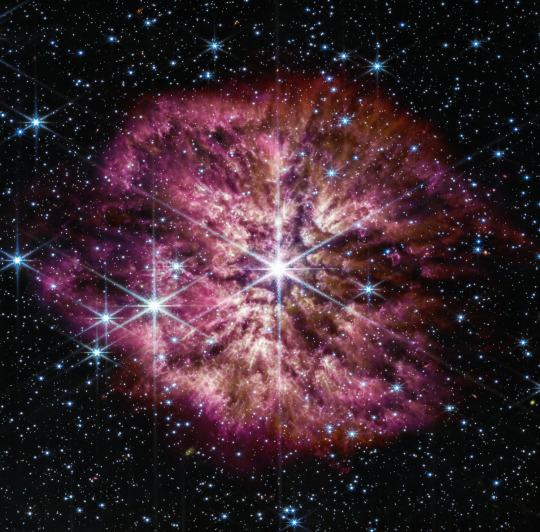


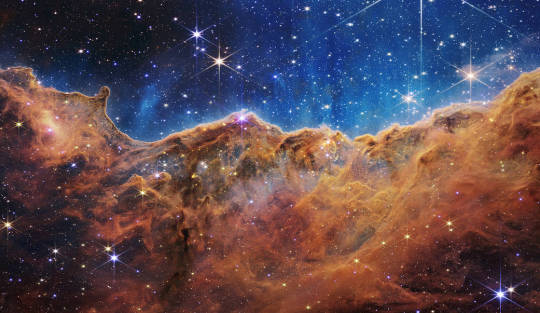


Top 10 Most Amazing James Webb Space Telescope Discoveries - Details here
#nasa#james webb space telescope#jwst#webb telescope#webb discoveries#james webb discoveries#exoplanets#jameswebbtelescope
61 notes
·
View notes
Text
New James Webb Pictures!

New James Webb Pictures of Neptune!

This is the first time we’ve gotten a picture of Neptune’s rings - we’ve known they’re there for a while, and now we have pictures!
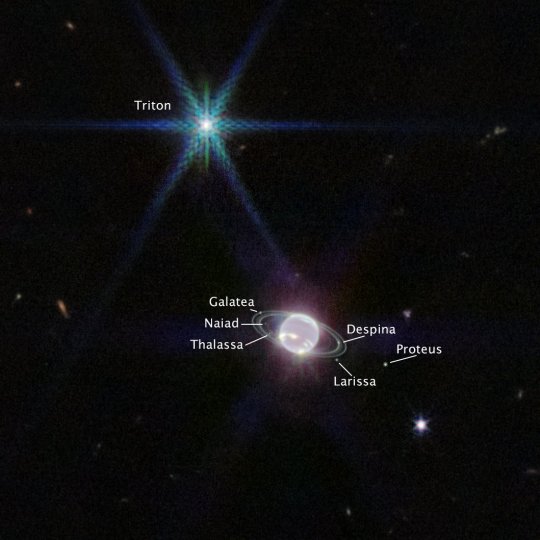
And here’s the visible moons labeled! (neptune has more moons than that)
#neptune#space#james webb#planets#triton#science#james webb telescope#space images#james webb images#discovery#ahhhh space fuck#its so pretttty#image posts#space pictures
3K notes
·
View notes
Text
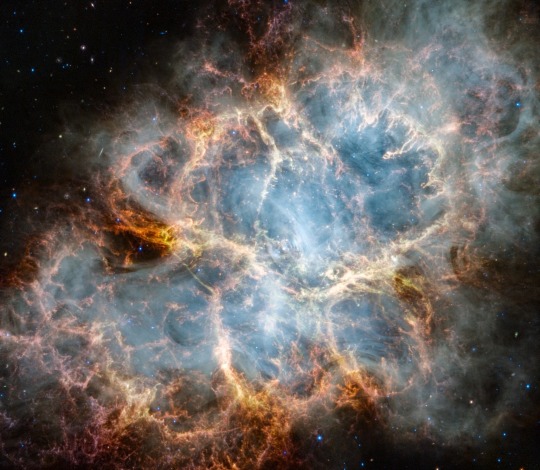
Crab Nebula, taken by the James Webb Space Telescope’s NIRCam (Near-Infrared Camera) & MIRI (Mid-Infrared Instrument)
Published by NASA 10/30/23
#photography#space#telescope#james webb space telescope#nebula#crab nebula#universe#stars#infrared#astronomy#galaxies#discovery#science#nasa
101 notes
·
View notes
Text








OC paintings so far! They are all based on something space related!
Left to Right:
James Webb (JWST), Trappist (TRAPPIST-1), Spitzer (SST), Chandra (CXO), Discovery (Space Shuttle), Habex (HabEx concept), Lynx (Lynx concept) and Luvoir (LUVOIR concept)
I have more ocs I plan to paint! Hubble and Origins are on the top of my list right now. Hope some of you might be interested to see them!
I also like talking about my ocs so if you want, you can ask me questions about them, or talk to me about anything space related because I love space!
#oc#original character#character design#character art#james webb#trappist#spitzer#chandra#space shuttle#discovery#habex#lynx#luvoir#my art#digital art#xenon art#space
80 notes
·
View notes
Text
"Looking deep into space and time, two teams using the NASA/ESA/CSA James Webb Space Telescope have studied the exceptionally luminous galaxy GN-z11, which existed when our 13.8 billion-year-old universe was only about 430 million years old."
"The formation of the first stars and galaxies marks a fundamental shift in cosmic history, during which the universe evolved from a dark and relatively simple state into the highly structured and complex environment we see today."
continue reading article
#astronomy#space#universe#galaxies#primeval galaxy#history#evolution#stages of development#james webb telescope#james webb space telescope#webb telescope#science#technology#discovery
11 notes
·
View notes
Text
Rare Six-Planet Star System Discovery is Music to Astronomers’ Ears - Technology Org
New Post has been published on https://thedigitalinsider.com/rare-six-planet-star-system-discovery-is-music-to-astronomers-ears-technology-org/
Rare Six-Planet Star System Discovery is Music to Astronomers’ Ears - Technology Org
A rare star system with six exoplanets has been discovered with an architecture unchanged for billions of years.
Exoplanet – illustrative photo. Image credit: Pixabay (Free Pixabay license)
The star, HD110067, that is 100 light-years away in the northern constellation of Coma Berenices, has been perplexing researchers for years. Now scientists, including those at the University of Warwick, have revealed the true architecture of this unusual system using NASA and ESA spacecrafts.
The first indication of planets orbiting the strange star system came in 2020, when NASA’s Transiting Exoplanet Survey Satellite (TESS) detected dips in the star’s brightness that suggested planets were passing in between the star and the TESS spacecraft. A preliminary analysis revealed two possible planets. One with a year (or an orbital period – the time it takes to complete one orbit around the star) of 5.64 days and another with an unknown period at the time.
Two years later, TESS observed the same star again. Analysing all data ruled out the original interpretation but presented two additional possible planets, changing the picture of the planetary system completely.
youtube
Much was still unknown about the planetary system, and that was when Rafael Luque of the University of Chicago and scientists across the world – including those at the University of Warwick – joined the investigation. They used data from the European Space Agency’s (ESA) CHaracterising ExOPlanet Satellite (CHEOPS), hoping to determine the orbital periods of these faraway planets.
The CHEOPS data was key in confirming a third planet in the system and the team had found the key to unlocking the whole system. It was now clear that the three planets were in a pattern of orbits known as an ‘orbital resonance’. For example, an outer planet takes 20.52 days to orbit, which is extremely close to 1.5 times the orbital period of the next planet with 13.67 days. This in turn is almost exactly 1.5 times the orbital period of the inner planet, with 9.11 days.
Thomas Wilson, Department of Physics, University of Warwick, said: “By establishing this pattern of planet orbits, we were able to predict other orbits of planets we hadn’t yet detected. From this we lined up previously unexplained dips in starlight observed by CHEOPS and discovered three additional planets with longer orbits. This was only possible with the crucial CHEOPS data.”
Orbitally resonant systems are extremely important to find because they tell astronomers about the formation and subsequent evolution of the planetary system. Planets around stars tend to form in resonance but can easily have their orbits thrown around.
For example, a very massive planet, a close encounter with a passing star, or a giant impact event can all disrupt the careful balance. As a result, many of the multi-planet systems known to astronomers are not in resonance meaning that multi-planet systems preserving their resonance are rare.
“We think only about one percent of all systems stay in resonance,” explains Rafael Luque. That why HD110067 is special and invites further study. “It shows us the pristine configuration of a planetary system that has survived untouched.”
“As our science team puts it: CHEOPS is making outstanding discoveries sound ordinary. Out of only three known six-planet resonant systems, this is now the second one found by CHEOPS, and in only three years of operations,” says Maximilian Günther, ESA project scientist for CHEOPS.
HD110067 is the brightest known system with four or more planets. Since those planets are all sub-Neptune-sized with likely larger atmospheres, it makes them ideal candidates for studying the composition of their atmospheres using the NASA/ESA/CSA James Webb Space Telescope and the ESA’s future Ariel telescope. Whereas ESA’s upcoming PLATO telescope, due to be launched in 2026, within which the University of Warwick is playing a leading role, could find planets in this system with even longer years.
Thomas Wilson added: “All of these planets have large atmospheres – similar to Uranus or Neptune – which makes them perfect for observation with JWST. It would be fascinating to test if these planets are rocky like Earth or Venus but with larger atmospheres – solid surfaces potentially with water. However, they are all much hotter than Earth, 170-530 degrees Celsius, which would make it very difficult for life to exist.”
“A resonant sextuplet of sub-Neptunes transiting the bright star HD 110067” by R. Luque et al. is published in Nature today. DOI 10.1038/s41586-023-06692-3
Source: University of Warwick
You can offer your link to a page which is relevant to the topic of this post.
#Analysis#architecture#Astronomy news#coma#Coma Berenices#Composition#data#Discoveries#ears#earth#ESA#European Space Agency#Evolution#exoplanet#Exoplanets#Featured Space news#form#Future#it#James Webb Space Telescope#jwst#life#Light#Link#Music#NASA#nature#One#orbit#Other
3 notes
·
View notes
Text
NASA's Webb Telescope discovers "mini-Neptune" planet GJ 1214 b
Exciting news! NASA's Webb Telescope has discovered a "mini-Neptune" planet outside our solar system. Learn more about GJ 1214 b! #NASA #GJ1214b #MiniNeptune
NASA’s James Webb Space Telescope has made an exciting discovery – the closest look yet at a mysterious, “mini-Neptune” planet outside our solar system. The planet, called GJ 1214 b, has a steamy atmosphere and is highly reflective, making it difficult to see through conventional observation methods. However, the Webb telescope’s Mid-Infrared Instrument (MIRI) was able to capture a “heat map” of…
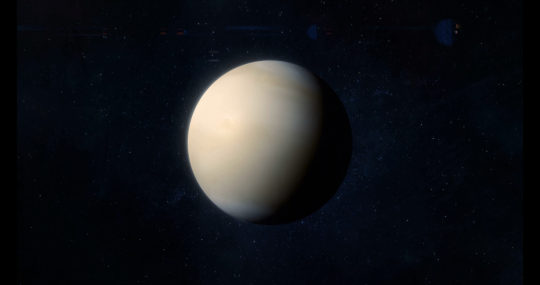
View On WordPress
#discoveries#Exoplanet#GJ 1214 b#heat map#James Webb Space Telescope#Mini-Neptune#NASA#science#space exploration#water world
2 notes
·
View notes
Text

👤My 'Moon' journey through 'MidJourney' AI 🤖 AI in architecture📐- Lunar exploration🌕
🧰Tools: Creativity🧑🎨+ MidJourney AI🤖+ Photoshop🧑💻+ Nasa - Cosmic Cliffs Image
#architecture#archidaily#moodboard#outer space#full moon#architecturefactor#architect#aiart#dalle2#aiinarchitecture#architecturestudent#lunar#metaverse#nasa james webb telescope early projects jwst space discovery history james webb
3 notes
·
View notes
Photo



(via JWST- James Webb Space Telescope Bucket Hat by DjoooDjooo)
#findyourthing#redbubble#jwst#nasa james webb telescope early projects jwst space discovery history james webb#james webb space telescope
1 note
·
View note
Link
Introducing Charlie....your new newsreader/commentator.
**Episode Summary:**
Embark on an interstellar journey with season three, episode twelve of Astronomy Daily, where we traverse the vast expanse of space to bring you the most enthralling tales from the cosmos. Our celestial safari promises a treasure trove of discoveries for stargazers and cosmo-files alike. Get ready to be captivated by the latest SpaceX Starship mission, the James Webb Space Telescope's icy revelations, and the enigmatic ghost particles that haunt the South Pole. This episode is your ticket to the universe's greatest mysteries and achievements, all from the comfort of your headphones.
---
**Featured Topics:**
1. **SpaceX Starship's Fiery Ascent and Descent:** Unpack the exhilarating launch and challenging reentry of SpaceX's most ambitious rocket, a testament to human ingenuity and the relentless pursuit of interplanetary colonization.
2. **James Webb's Chilly Discovery:** Dive into the frigid nurseries of starbirth with Webb's latest observations, revealing the icy molecules that may hold the secret to life's cosmic origins.
3. **Red Dots and Black Hole Beginnings:** Explore the significance of JWST's detection of small quasars, shining a light on the early stages of supermassive black holes and challenging our understanding of cosmic growth.
4. **Winchcombe Meteorite's Earthly Impact:** Investigate the Winchcombe meteorite's role in life's evolution on Earth, as scientists uncover biorelevant molecules that could trace our lineage to the stars.
5. **ICE Cube's Neutrino Breakthrough:** Discover the ghostly particles that traverse everything in their path, with ICE Cube Observatory's decade-long quest revealing tantalizing insights into the universe's most energetic events.
---
**Additional Information:**
For a daily dose of cosmic wonder, visit astronomydaily.io and subscribe to our free newsletter. Dive into a universe of episodes and join our community of astronomy enthusiasts. And remember, the mysteries of the cosmos are endless, so subscribe to Astronomy Daily - The Podcast to stay connected with the ever-expanding universe.
---
**Next Episode Preview:**
In our next cosmic installment, we'll continue to navigate the celestial currents, bringing you the latest in space exploration, astronomical discoveries, and the stories that connect us to the infinite. Stay tuned for more astronomical adventures that stretch the imagination and fuel the soul.
---
**Closing Remarks:**
As we sign off from this episode, we're reminded of the boundless curiosity and courage that define our quest to understand the universe. Thank you for joining us on this voyage across the stars. Until we meet again, this is the Astronomy Daily Team, wishing you clear skies and a universe of possibilities.
---
** Sign-off:** "Keep your eyes on the skies and your heart filled with wonder. Join us again for another episode of Astronomy Daily, the podcast. Clear skies, everyone!
📋 Episode Chapters
(00:00) Welcome to astronomy daily your interstellar path to the wonders stretching across the cosmos
(00:42) SpaceX's Starship rocket successfully launched into space; mission encountered adversity
(03:16) The James Webb Space Telescope has revealed a vast array of icy molecules
(06:25) Astronomers have spotted faint little red dots in a slice of sky
(08:54) The Winchcombe meteorite provides scientists with a real life space detective story
(11:58) Scientists have isolated signals from seven candidate astrophysical tau neutrinos
#boca#booster#chica#colonization#cosmic#discovery#exploration#heavy#james#lunar#mars#missions#space#spacex#starship#super#surface#telescope#texas#webb
0 notes
Text
The James Webb Telescope has captured a mind-blowing image of I Zwicky 18
In a new image released on March 26, 2024, The James Webb Telescope has captured a mind-blowing image of I Zwicky 18, a dwarf irregular galaxy like those in the early universe! This galactic furnace is churning out stars at a furious pace, with dusty bubbles sculpted by young stellar winds. A neighbor galaxy might even be playing a role in this starburst frenzy! Webb is diving deep into I Zw 18's dust and stars to unlock its history and the secrets of galaxy formation. ✨ Previously thought to be a late bloomer, new evidence suggests I Zw 18 started forming stars billions of years ago. Webb also hints that the starburst regions fired up at different times! This discovery is a game-changer, offering a glimpse into the workings of galaxies in the early cosmos. Stay tuned as Webb continues to unravel the mysteries of I Zwicky 18 and beyond! #JWSTdiscovers #galaxyevolution #spaceexploration

#nasa#james webb space telescope#jwst#webb telescope#webb discoveries#esa#spaceexploration#james webb discoveries#jameswebbtelescope
39 notes
·
View notes
Text
Science Friday on Euclid and black holes.
#science#science friday#black holes#euclid#james webb space telescope#hubble space telescope#chandra telescope#discovery#space
0 notes
Text
#carbon-based molecules found on ‘water world’ exoplanet#james webb space telescope (jwst)#james webb telescope finally captured what's inside a black hole#exoplanet size comparison#hycean exoplanet#exoplanet k2-18 b has an ocean and conditions necessary for life#life on another planet#hubble telescope#kepler telescope#exoplanet#tess telescope#exoplanets like earth#habitable exoplanets#found new planets#super habitable planet#better than earth#terrifying discovery#james webb space telescope#jwst#k12 education#k 12 album
1 note
·
View note
Text
Webb reveals new structures within iconic supernova

(Credit: Science: NASA, ESA, CSA, M. Matsuura (Cardiff University), R. Arendt (NASA-GSFC, UMBC), C. Fransson (Stockholm University), J. Larsson (KTH). Image Processing: A. Pagan (STScI).)
"NASA's James Webb Space Telescope has begun the study of one of the most renowned supernovae, SN 1987A (Supernova 1987A). Located 168,000 light-years away in the Large Magellanic Cloud, SN 1987A has been a target of intense observations at wavelengths ranging from gamma rays to radio for nearly 40 years, since its discovery in February of 1987. New observations by Webb's NIRCam (Near-Infrared Camera) provide a crucial clue to our understanding of how a supernova develops over time to shape its remnant.
This image reveals a central structure like a keyhole. This center is packed with clumpy gas and dust ejected by the supernova explosion. The dust is so dense that even near-infrared light that Webb detects can't penetrate it, shaping the dark "hole" in the keyhole.
A bright, equatorial ring surrounds the inner keyhole, forming a band around the waist that connects two faint arms of hourglass-shaped outer rings. The equatorial ring, formed from material ejected tens of thousands of years before the supernova explosion, contains bright hot spots, which appeared as the supernova's shock wave hit the ring. Now spots are found even exterior to the ring, with diffuse emission surrounding it. These are the locations of supernova shocks hitting more exterior material."
continue reading article
#cosmology#james webb space telescope#james webb telescope#JWST#astronomy#space#universe#science#discovery#star#wavelength#visible spectrum#waves#electromagnetism#hourglass#magnetic field
4 notes
·
View notes
Text
Who is Richer: Andrew Tate and Chloe Kardashian | Cars, Lifestyle, Home..
Who is Richer: Andrew Tate and Chloe Kardashian | Cars, Lifestyle, Home..
Who is Richer: Andrew Tate and Chloe Kardishian | Cars, Lifestyle, Home..
Welcome Back To Celebritea!
Kardashian has been linked to a number of famous athletes in recent years, most notably ex-husband and former NBA star Lamar Odom. She married the then-Los Angeles Laker in early 2009 — just one month after meeting him. Although the two starred in a number of television appearances together, they…
View On WordPress
#facts about space#james webb space telescope#outer space#space#space discoveries#space discovery#space facts#spacex#voyager space
0 notes
Photo

PRADA Experiment By me
( IG iammanjiit )
#prada#star#stars#nasa picture of the day#nasa james webb telescope early projects jwst space discovery history james webb#nasa james webb telescope first image joe biden full color jwst space nasa#nasa#brand#brands#brando#prada brand
1 note
·
View note